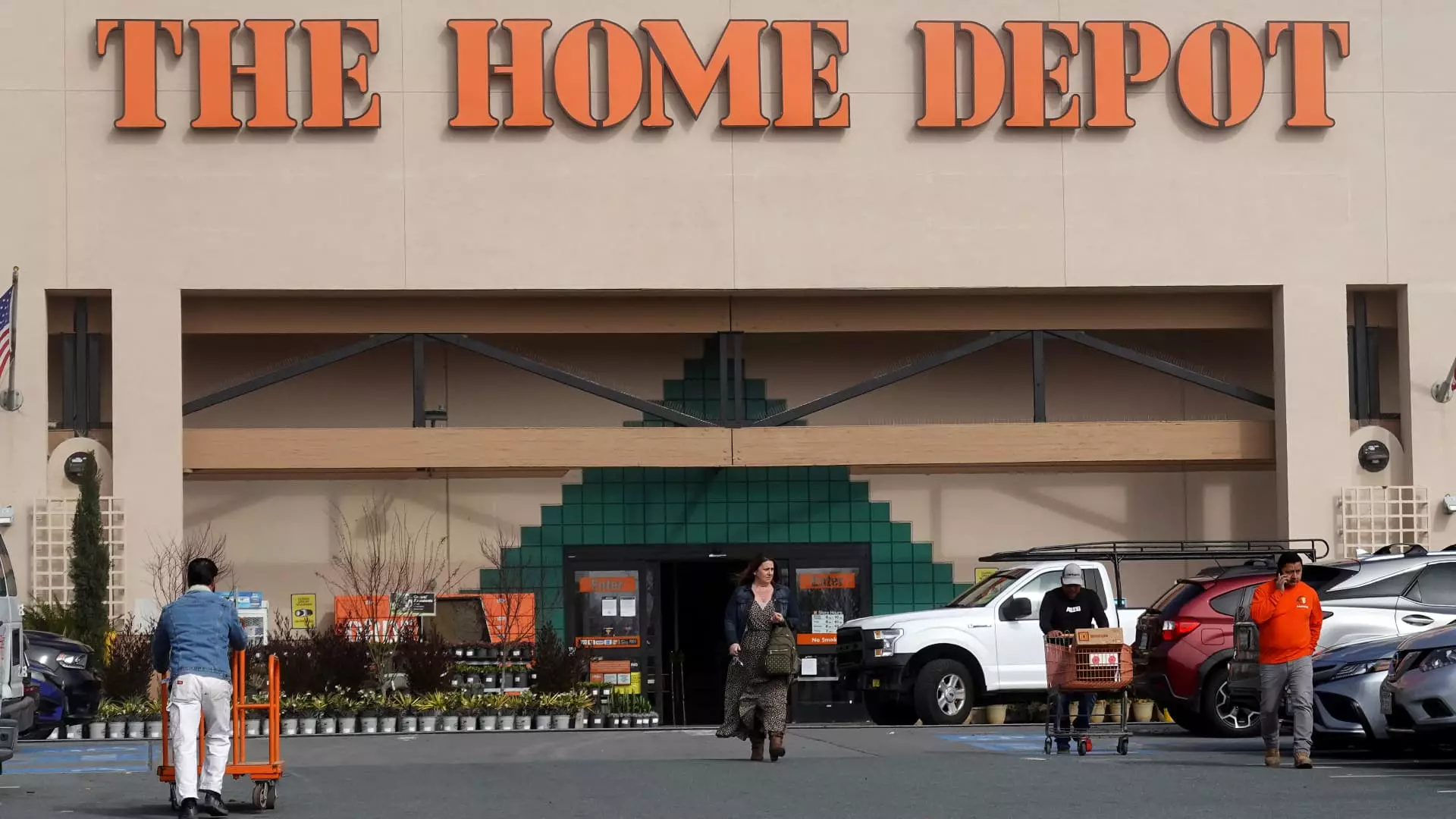As the weather warms and Americans turn their attention to outdoor projects, Home Depot stands at a pivotal crossroads. Known as the “Christmas” for home improvement retailers, the upcoming weeks are primed for substantial sales opportunities, particularly during their Memorial Day outdoor sales event, running through May 28. This initiative is more than just a standard marketing ploy; it serves as a barometer for consumer sentiment and a litmus test for the overall economic health in the home improvement sector. With discounts on everything from plants to grills, Home Depot aims to lure enthusiastic gardeners and casual shoppers alike into its stores.
The company’s success hinges on the seasonal nature of the home and garden market, a phenomenon that generates traffic and revenue integral not just for the company but for broader retail sectors. In fiscal 2024 alone, Home Depot’s outdoor garden sales contributed approximately $20.83 billion, marking a 1.29% increase over the previous year. This figure might seem modest, but it illustrates a critical aspect of the company’s financial ecosystem—seasonal trends directly influence sales, especially when combined with outdoor living trends and a renewed interest in home improvement sparked by the pandemic.
Revenue Projections and Economic Headwinds
Despite the optimistic sales outlook, analysts predict a rocky start to 2024. The first quarter, a historically weak season for Home Depot, is anticipated to yield revenue of about $39.3 billion—an 8% increase compared to the previous year, but the enthusiasm is tempered by underlying economic factors. The expectation of tepid earnings due to “unfavorable weather, weak consumer sentiment, and mixed performance from peers” indicates that external conditions, such as elevated mortgage rates lingering near 7% and tariff uncertainties, could considerably dampen sales projections. Additionally, investors are anxiously awaiting the first-quarter earnings report and forward guidance that might offer clearer insight into the company’s outlook amidst these testing circumstances.
But this is not merely a narrative of doom and gloom. Morgan Stanley recently reported an increasing demand for larger projects among contractors—an encouraging sign that the industry may be on the precipice of recovery. If mortgage rates can dip below 6.5%, as Jim Cramer optimistically suggests, we may witness a resurgence in home-buying and consequently, home improvement spending. This interplay between housing market dynamics and consumer spending is crucial, as it illustrates how intricately linked these sectors truly are.
Tariffs and Market Sentiment: A Double-Edged Sword
Home Depot’s trajectory is undeniably affected by tariff impacts on materials and import costs, issues that have persisted in the background as geopolitical tensions fluctuate, particularly those between the U.S. and China. While uncertainty still looms—creeping like an uninvited guest at a party—some analysts rally hope that a potential easing of these tariff-related pressures could pave the way for a more robust recovery later in the year. Combined with positive reassessments of companies like Stanley Black & Decker, who received an upgrade to a buy-equivalent rating, the market might be on the verge of a significant adjustment.
This situation presents a paradox; as forecasted difficulties loom, so do signs of improvement. Home Depot’s CEO, Ted Decker, remains steadfast, asserting that the company will weather whatever storms may arise from tariffs, asserting confidence in their adaptability and resilience. This assertion reinforces the idea that while external economic factors can influence a company’s immediate fortunes, internal operational capabilities and strategic foresight often determine long-term success.
The Stock’s Performance: Investors’ Dilemma
As Home Depot’s stock faces a year-to-date decline of roughly 2.5%, it weighs heavily on investors, especially when juxtaposed against a nearly 1% rise in the S&P 500. The stark reality is that Home Depot is hovering approximately 12% below its historic peak, entrenching a sense of anxiety among shareholders who have been monitoring its performance amid relentless economic turbulence. The stakes grow higher with every trading day as Cramer’s advocacy hints at potential opportunities for comeback, demanding attention from both retail and institutional investors alike.
In essence, Home Depot’s situation encapsulates the current dilemmas faced by many retailers heavily reliant on seasonal upswing. While there are significant challenges ahead, the potential for rebound and growth remains palpable. For those engaged in the market, this duality can be difficult to navigate, but as the retail giant pushes through these trials, it serves as a reminder of the sometimes unpredictable nature of economics—the interplay of consumer instincts and market forces could very well redefine the landscape of home improvement retail in the coming months.

